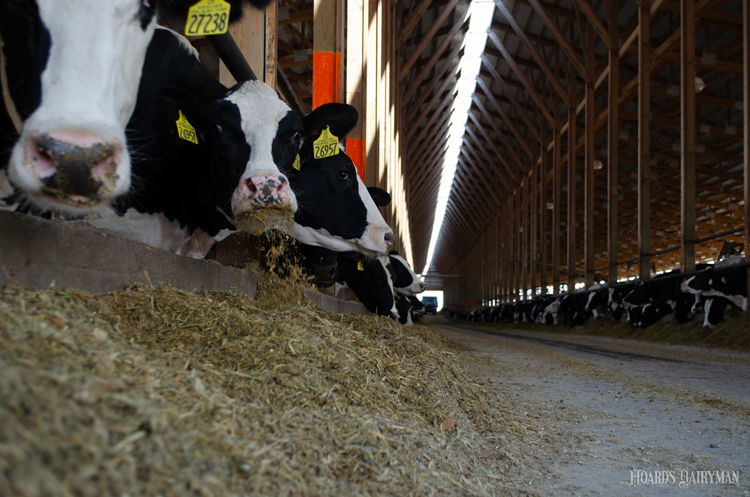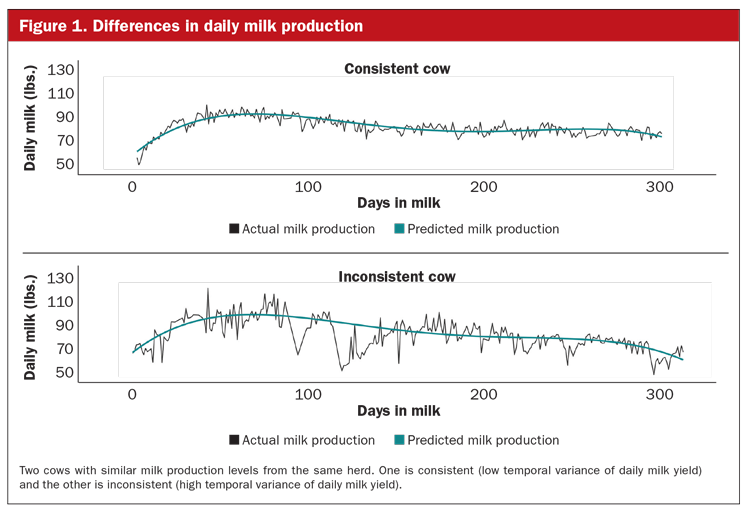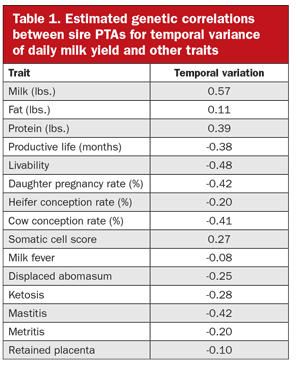
Recently, while gearing up for a soccer match, I was deeply immersed in how to measure consistency in dairy cattle performance. Curious before the game, I asked our team manager about her take on consistent player performance. Her insight was gold: “I prefer a player with predictable performance, regardless of the opponent or conditions, even if they score slightly fewer goals than the top performer. It’s about predictability.”
It struck me — consistent performance is crucial whether we’re talking about human athletes or high-performing animals. Here’s why!
Researchers from the University of Wisconsin-Madison are calculating resilience indicators using a national dataset to establish a data pipeline that can result in U.S. genetic evaluations and improved herd management tools. Modern intensive farming systems have prioritized the average performance of an animal in optimal conditions, while ignoring the animal’s ability to perform in variable or suboptimal conditions. Such conditions could include fluctuating weather, feed quality and composition, labor shortages, disease outbreaks, and animal movements, among others.
There is a widespread recognition for the need to shift emphasis toward enhancing an animal’s resilience and robustness in response to mounting environmental and nutritional variability. As resilience is a complex trait and encompasses many different biological functions, we decided to break it down into an easy-to-understand metric — consistency — for practical implementation and as a starting point to disentangle resilience indicators.
Consistency is defined as a level of performance that does not vary greatly in quality over time. Our goal is to achieve predictable performance in unpredictable conditions.

Why measure consistency?
Consider the anonymous cow, the one with sometimes slightly lower milk production but remarkably fewer health issues, minimal milk loss, and hardly any pen movements. She’s so trouble-free that you might even struggle to recall her tag number, yet she consistently proves to be a profitable asset.
Consistent performance becomes increasingly valuable in a world with unpredictable environmental conditions like extreme weather events, nutritional variability, and unpredictable labor conditions. Consistency of performance is a key component of economic sustainability on dairy operations because it can help farmers reduce disease occurrences, optimize labor utilization, minimize milk losses, and avoid veterinary interventions.
High frequency data, in the form of daily milk weights, are routinely collected on many farms. These records provide a unique opportunity to capture phenotypes that will enable selection for greater consistency, and therefore, sustainable milk production that improves animal welfare while extracting additional value from the data already generated on the farm.
Daily milk weight data, gathered routinely from on-farm software, helps us delve into the variation of milk production within a lactation period, giving us the temporal variation phenotype. Simply put, temporal variation is all about measuring the variation in milk production over time, whether it’s the entire lactation period or specific stages like early, mid, and late lactation. This data can be sourced from inline milk meters or automatic milking systems.
Cows show varying levels of consistency or inconsistency in daily milk yield compared to expected lactation curves. Figure 1 paints the picture: two cows from the same group, but with different stories.
The consistent cow’s actual daily milk weights (in black) neatly follow the fitted curves (in blue), resulting in a temporal variance phenotype of 2.9. On the flip side, the inconsistent cow’s production roller coasters throughout the lactation period, leading to greater variation and a temporal variance phenotype of 4.7 — our definition of inconsistent performance.
Additionally, our team at UW-Madison is investigating the consistency of dry matter intake in dairy cows, which we have also found to be heritable (0.14), suggesting that genetic selection may be successful in achieving more consistent intakes. This may lead to improved feeding management, more labor efficiency, and greater resilience to management and environmental perturbations.
Is there a genetic component?
Variation in daily milk weights is moderately heritable (0.23) and can be enhanced through genetic selection. Genetic correlations between different lactations are close to 1, highlighting a genetically identical trait between primiparous and multiparous cows. Genetic correlations, as shown in Table 1, confirm that our focus on temporal variance phenotypes aligns with capturing resilience and consistency.

Notably, negative genetic correlations between temporal variance and health traits indicate that higher variability in milk production is linked to fewer health events. This pattern holds true for fertility and longevity traits, showcasing the benefits of measuring consistency in performance.
When it comes to milk production, we see a positive genetic correlation (0.57). This is because the more milk cows give, the more their production levels tend to fluctuate. This makes sense because, in general, higher-producing cows can be more sensitive to disturbances, which is reflected in their daily milk production.
Our next goal is to establish a pipeline to collect daily milk weights and input them into the national cooperator database (or an equivalent system) to compute national genetic evaluations for consistency indicators. We aim to calculate on-farm software-based phenotypic measurements of temporal variation to assist in management decisions. We also have the opportunity to leverage recorded pen information, and how individual cows respond to challenges on a pen level inform us about their resilience to specific perturbations.
The opportunity for selection of consistent performance coupled with its favorable correlations with health, fertility, and longevity traits is a strategic move under current market climates and sustainability goals. There may be a slightly undesirable genetic correlation with milk production, but through reassessing herd goals and the sustainability component of dairy production, you could end up with more cows delivering predictable performances even in unpredictable conditions. Selecting for consistent performance is a game-changer for the resilience and success of your dairy operation. To learn more, read our paper recently published in the Journal of Dairy Science at on.hoards.com/consistentcows.


